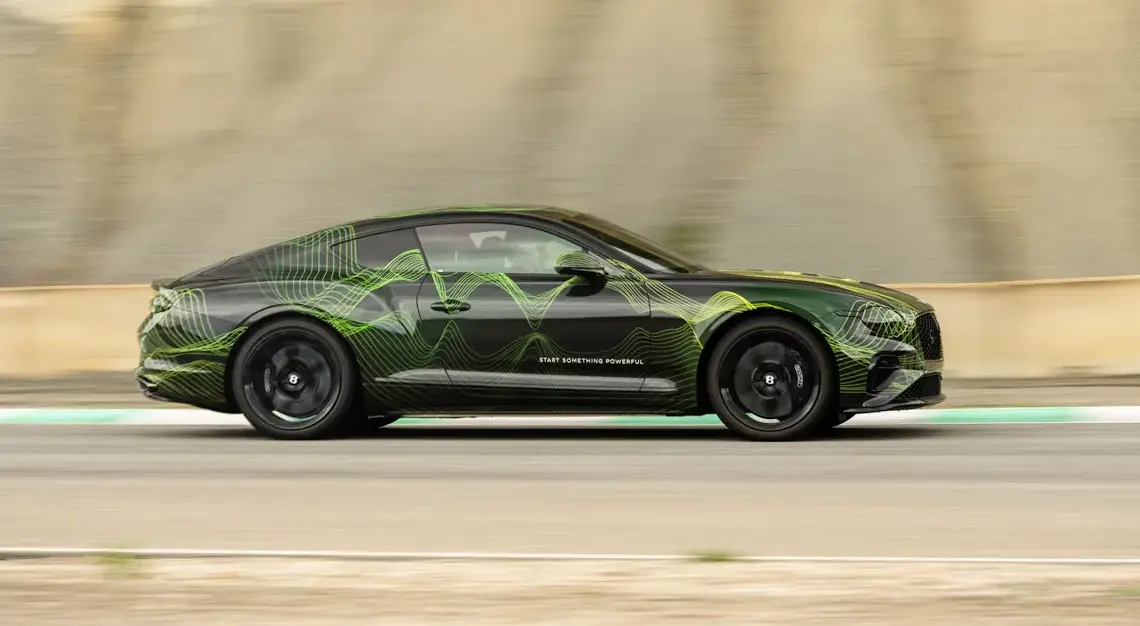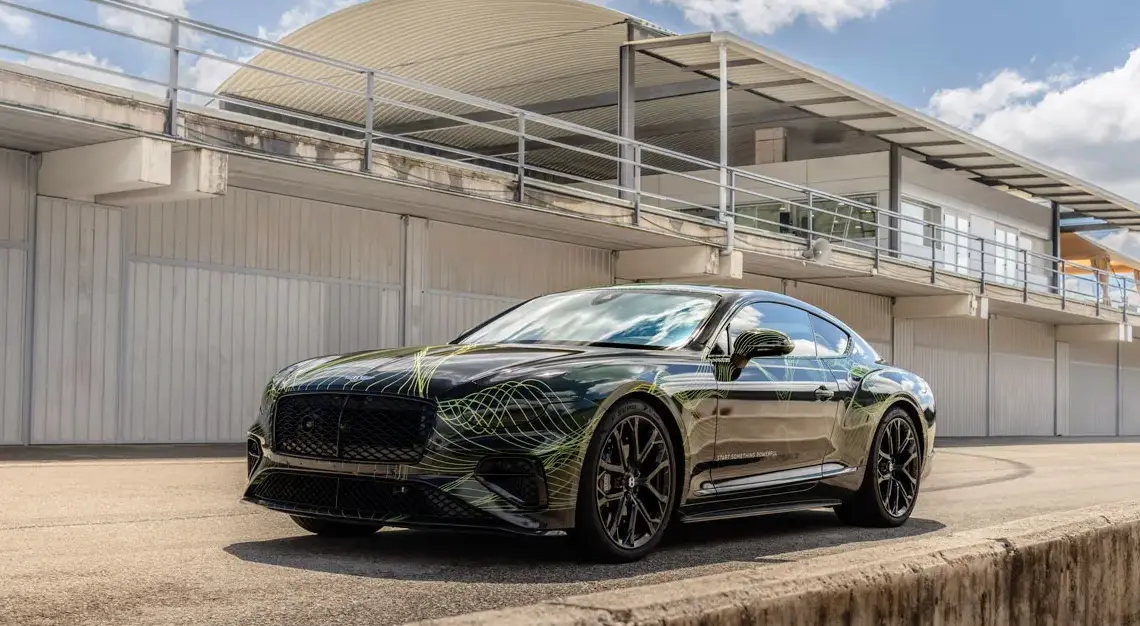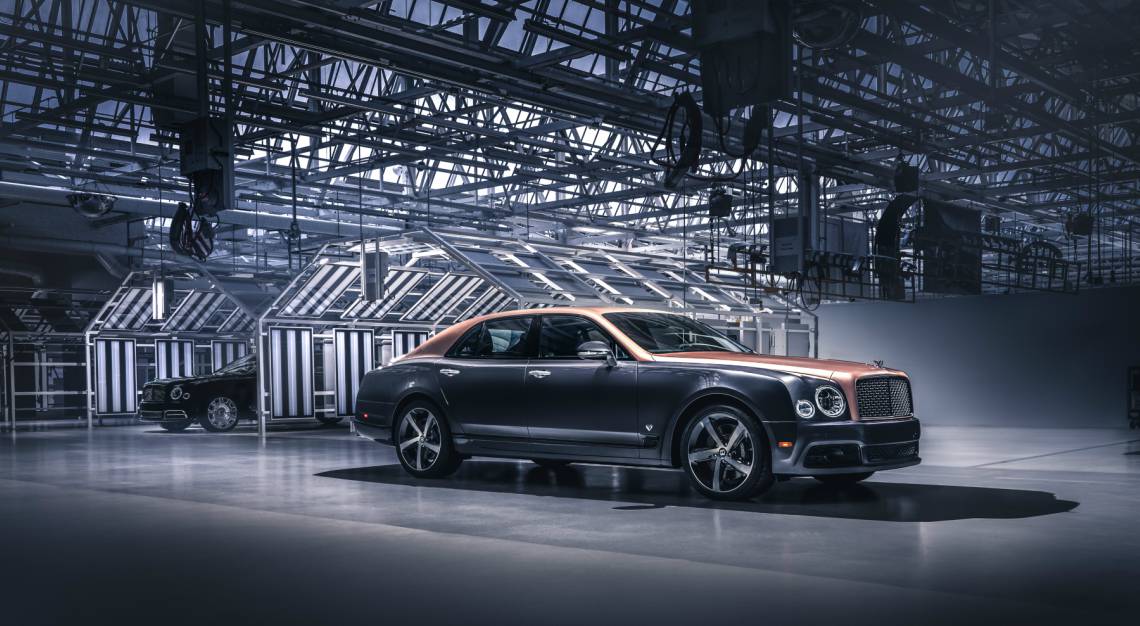With 771 hp and 1000 nM of torque, the new Continental GT Speed is touted as the most powerful Bentley to date, and we tested it before the official reveal
Bentley heralds the freshly updated Continental GT Speed as the most powerful car in the marque’s history (even more muscular than any race car before it), but big performance numbers are only part of the x this variant represents. It’s also the bridge between pure internal combustion and full electrification for a model who had versions named Robb Report’s Car of the Year in 2022 and 2023.
The Continental GT has long been a critical model for Bentley, as the coupe led the brand’s rebirth some two decades ago following a tumultuous sequence of bankruptcies, ownership under Rolls-Royce, and eventual acquisition by motoring behemoth Volkswagen Group. Now, the new Continental GT Speed delivers 771 hp and 1000 nM of torque from beneath its prodigious snout.

Yes, that’s a lorryload of oomph. But it’s really the philosophical and qualitative bits that make the latest GT an important pivot for the brand. For starters, the subtly restyled coupe has done away with the 12-cylinder power plant that defined its modern revival, earning a hybrid configuration that pairs a 4.0-litre twin-turbo V-8 with a 25.9 kWh battery feeding an electric motor that enables pure EV operation. The combo can slide the big-boned coupe through key congestion zones like central London and Singapore for around 80 kilometres of gas-free driving.
Our first taste of the new Conti came not at an eco-constrained city centre, but at Spain’s Parcmotor Castellolí, a scenic circuit in the rolling hills northwest of Barcelona. When probed about the road car’s track-worthiness ahead of the drive, one Bentley brass suggested that it was capable, though might not set the track record. That said, the 4-kilometre course’s elevation changes, non-technical nature, and generally amenable flow appeared well curated for what is essentially a luxury touring machine that’s slotted above the entry level model, but beneath a hypothetically more aggressively-tuned future Supersports model. While the track was nicely chosen, the forecast appeared to be rainy with a chance of spinouts.

Regarding the GT Speed’s level of athleticism on the circuit, weight watchers will be aghast to know that the new hybrid adds around almost 200 kilograms of mass over the W-12-powered GT Speed. That figure would wreck the intent of a purebred sports car, but Bentley has always been about heft, and grand tourers like the Continental have long emphasised pavement-gobbling comfort over outright agility. However, the new Continental takes strides towards ameliorating the impact of the increased weight on handling. The outgoing GT Speed’s 60/40 weight distribution, for example, places an unnatural proportion of weight over the car’s front end. Thanks to the lighter V-8 and the rearward positioning of the battery, the new car strikes a 50/50 balance.
Then there’s the four-wheel steering system that pivots the tail for quicker turns at lower speeds and dials in stability when driving faster. Helping apportion the power delivery is an electronic rear differential and a central clutch that can drive nearly 100 per cent of the torque to the rear wheels or divert power to the front wheels, as needed.
Our first laps in the car come under a light drizzle and a dubious amount of precipitation on track. At idle and under light revs, the V-8’s rumble sounds delightfully raw and crackly. The only artificial sounds on tap come from the legally mandated pedestrian-safety thrum when in EV-only mode; all burbles and snaps are natural. Based on the hot-rod quality of the tailpipe sounds, onlookers might not suspect this is a hybridized power train. After all, the V-8 application here is a far cry from the milder, more efficiency-focused six-cylinder hybrid setups in the Bentayga and Flying Spur.
Nestling into the GT Speed’s cockpit in pit lane feels a bit counterintuitive. Between the 3-D-quilted leather door panels, copious aromatic hides, and baronial details (such as the 12.3-inch rotating display), there’s quite a bit of overt fanciness on hand for the otherwise purposeful task of hustling around a racetrack.

The initial sensation of thrust feels markedly urgent, yet more fluid and refined than in past versions of the GT Speed. Thanks to the electric motors’ torque augmentation, the eight-speed dual-clutch transmission’s gearchanges are blanketed by electric power, resulting in shifts and forward motion that are impressively smooth. A few under-hood alterations are responsible for the subtle changes. These include ditching dual-scroll turbos for single-scroll units, since the EV system contributes to torque at lower rpms; as such, any lag is supplanted by forward motion from the electric motor.
This GT Speed burns cleaner and produces more torque than the previous 12-cylinder iteration; cylinder deactivation is no longer incorporated since the entire engine is capable of shutting off when needed. And when it’s on, it’s on: flat-footing the accelerator pedal yields what feels like a second pair of turbochargers between the middle and upper registers of the rev range. As for straight-line acceleration, the vehicle is claimed to cover zero to 100 km/h in 3.1 seconds, though that feels conservative. Yet there’s greater punch as the car hurdles from highway pace to its upper reaches, which end at a claimed top speed of 208 mph (though we didn’t take it there).
Despite the added mass, the Continental enters corners with confidence—at least with as much confidence as can be mustered given the slick conditions. Riding on street-spec Pirelli P Zero rubber, the car displays adequate grip in the wet but outstanding body control due to the 48-volt electromechanical active anti-roll suspension, which leverages a high-torque motor to stabilise the body. New dual-valve dampers are said to expand the suspension’s repertoire from cushy to firm, though track duties prevented us from experiencing that under real-world road conditions, where it would be most noticeable.
The Continental feels planted until a squeeze of the right pedal ups the power to all four wheels, resulting in a predictable (yet nonetheless hair-raising) drift. The moments spent “slideways” in the GT reveal a newfound balance to the chassis, thanks in part to the 50/50 weight distribution and the electronic systems that help maintain the vehicle’s intended path. It’s the little things that keep this nearly three-ton beast from getting out of hand, namely an intuitive steering feel, a predictable throttle response, and the inherent sense of balance. While wet conditions prevented us from fully exploring the Conti’s cornering capabilities, we wonder if grip from its street-oriented Pirellis might be easily overcome by the combination of aggressive cornering, hard braking, and warm temps.

All factors considered, there is the fairly obvious disclaimer that the vast majority of Bentley owners will not be exercising their GTs at racetracks. Yes, the new Speed acquits itself rather well in these challenging surroundings, especially considering its considerable curb weight. But let’s also not forget that Bentley’s modern sporting streak, as first introduced with the Turbo R models of the early 1990s, was centred on adding a dash of verve and gobs more torque. With that original intent in mind, the new GT Speed respects the past despite the complex, and potentially polarising new drivetrain.
Considering the complicated matrix of tradition and future legislation, the hybrid V-8 power train creates a plausible transition on the often-awkward shift to electrification. It’s worth remembering that the W-12 engine, introduced 20 years ago under the famously obsessive engineering aegis of Ferdinand Piëch, was never a part of the brand’s 20th-century identity until that point; historically, Bentley’s signature was its torquey and low-revving 6.75-litre V-8.
Bentley’s reversion to eight cylinders, with added torque via electric power, could be viewed as more on-brand than the W-12 power plant, which is getting phased out this summer. Interestingly, another controversial high-performance hybrid dropped almost simultaneously in the form of the Porsche 911 GTS.
Bentley’s behind-the-scenes associations with fellow Volkswagen Group member Porsche make the two debuts hardly coincidental, though we’d argue that the inherently heavy battery technology faces less headwinds in the grand touring–focused Continental than it does in a sports car like the 911. If anything, this Continental’s styling departures (more on those after the official reveal later in June) might offer the biggest pinch point in what is otherwise a logical progression of Bentley’s big coupe.
This story first appeared on Robb Report USA






